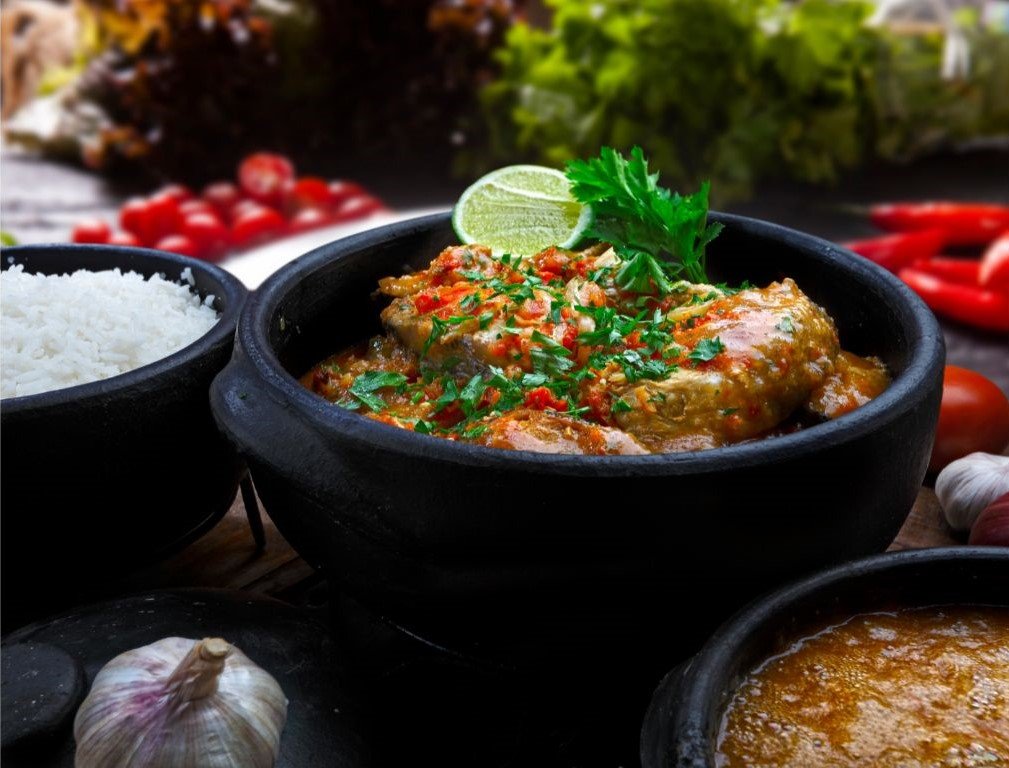Introduction to Moqueca
Moqueca is a traditional Brazilian dish that showcases the rich culinary heritage of the country. Originating from the coastal regions of Brazil, this flavorful seafood stew has gained popularity beyond its borders, thanks to its distinctive taste and cultural significance. As you explore the world of moqueca, it is essential to understand its roots, regional variations, and the key ingredients that define this delightful dish.
The two most well-known versions of moqueca are Moqueca Baiana and Moqueca Capixaba, each representing distinct cultural influences and preparation methods. Moqueca Baiana, hailing from Bahia in the northeastern part of Brazil, is characterized by its vibrant combination of coconut milk, palm oil, and an array of spices. This version is often enriched with ingredients such as tomatoes, onions, and peppers, creating a rich and aromatic base that complements the seafood. The use of dendê oil, extracted from the fruit of the African palm, is particularly notable in this variant, lending it a distinct color and flavor.
In contrast, Moqueca Capixaba, which comes from the state of Espírito Santo, emphasizes a more restrained and lighter profile. This version primarily features olive oil instead of palm oil and often includes cilantro, making it a fresher option. The use of fish, shrimp, and sometimes crab allows the natural flavors of the seafood to shine through, creating a harmonious balance between the ingredients. The preparation often involves layering the ingredients in a clay pot, allowing the flavors to meld together as they cook slowly.
Both variations of moqueca are celebrated not only for their unique tastes but also for their cultural status, often served during festive occasions and family gatherings. Understanding these differences enhances the appreciation for this home made moqueca, which ultimately strives to combine tradition with the flavors of fresh, local ingredients. This deep-rooted dish exemplifies the rich cultural tapestry of Brazilian cuisine and invites everyone to enjoy a culinary experience filled with history and flavor.
Essential Ingredients for Moqueca

To prepare a traditional and authentic moqueca recipe, selecting the right ingredients is crucial. Typically, moqueca is made with fresh fish, such as snapper, grouper, or mahi-mahi. These types of fish not only provide a delightful flavor but also hold up well during the cooking process. For seafood lovers, incorporating shrimp or mussels can enhance the dish, adding depth and complexity. When selecting fish or seafood, always opt for the freshest options available to ensure the best moqueca experience.
Another key element of the best moqueca is coconut milk, which adds a creamy texture and rich flavor. This ingredient is essential in bringing the dish to life, enabling it to embody the coastal flavors typically associated with Brazilian cuisine. Alongside coconut milk, dendê oil, derived from the fruit of the African oil palm, provides a distinctive aroma and color to the moqueca. This vibrant oil is a staple in Brazilian cooking, and although it may be challenging to find in regions outside Brazil, specialty grocery stores or online retailers often carry it.
Fresh herbs play a vital role in enhancing the overall taste. Cilantro and green onions are commonly used to garnish moqueca, offering a refreshing contrast to the rich ingredients. When sourcing these herbs, prioritize purchasing them fresh to maintain their vibrant flavor. For those living outside Brazil, if certain ingredients are unavailable, some substitutions may suffice; for example, using regular vegetable oil in place of dendê oil or coconut cream for coconut milk might yield satisfactory results, though not an identical flavor profile. Understanding these ingredients’ importance ensures that your home-made moqueca stays true to its roots while accommodating your local availability.
Step-by-Step Recipe to Make Moqueca

To create the best moqueca at home, start by gathering your ingredients. For an authentic moqueca recipe, you will need 1 pound of firm white fish, such as cod or snapper, 1 pound of shrimp, 2 cups of coconut milk, 1 large onion, 1 bell pepper, 2 tomatoes, 4 cloves of garlic, a handful of fresh cilantro, lime juice, and dendê oil. This vibrant array not only makes it visually appealing but also enriches its flavor profile.
Begin by marinating your seafood; combine the fish and shrimp with lime juice, minced garlic, and salt. Allow this mixture to sit for at least 30 minutes to absorb the flavors. While your seafood marinates, chop the onion, bell pepper, and tomatoes, ensuring to separate them for the cooking process. The layering of flavors is essential in a home made moqueca to achieve its distinct taste.
Heat a clay pot or large skillet over medium heat and add a tablespoon of dendê oil. This traditional oil is key for achieving the authentic taste of moqueca. First, sauté the onions until translucent, followed by the bell peppers and tomatoes, cooking them until softened. This initial step builds the base for your moqueca, releasing the vegetables’ natural flavors.
Once the vegetables are tender, stir in the marinated seafood, allowing it to blend with the sautéed ingredients. Pour in the coconut milk and bring the mixture to a gentle simmer. Cover the pot and let it cook for about 20 minutes, until the fish is opaque and the shrimp are pink. During this time, you may stir occasionally to ensure a flawless consistency and prevent sticking.
Lastly, sprinkle chopped cilantro into the pot just before serving to give your best moqueca a fresh twist. Serve it hot with a side of rice or farofa, allowing the rich flavors to shine through. Following this step-by-step guide, you will master the art of preparing an authentic moqueca, elevating it to a home-made classic that delights the senses.
Serving Suggestions and Pairings
Once the home made moqueca is prepared, the presentation and the accompanying dishes can greatly enhance the dining experience. Traditionally, moqueca is served in a clay pot, which not only retains heat but also adds an authentic touch to the meal. For a delightful serving experience, garnish your moqueca with fresh cilantro and lime wedges. This not only enhances the visual appeal but adds an extra layer of flavor that complements the dish beautifully.
A classic pairing with the best moqueca is white rice, which acts as the perfect foundation to soak up the rich, flavorful broth. The fluffy rice balances the spiciness and acidity of the moqueca, making each bite more enjoyable. Additionally, farofa—a toasted cassava flour mixture—is often served alongside moqueca. It adds a crunchy texture and a savory note that contrasts nicely with the soft fish and vegetables of the stew.
When it comes to beverages, a chilled caipirinha, Brazil’s national cocktail made with cachaça, sugar, and lime, pairs remarkably well with moqueca. For those preferring non-alcoholic options, fresh coconut water or a tangy lemonade can provide a refreshing contrast to the meal’s richness. If wine is preferred, a light white wine or a dry rosé complements the flavors of the dish well without overwhelming it.
Finally, the overall dining experience can be enhanced by providing a variety of toppings such as sliced avocados or additional hot sauce for those who enjoy extra spice. By thoughtfully preparing side dishes and choosing the right beverages, you can elevate your dining experience while enjoying the delicious and aromatic flavors of this iconic Brazilian dish. Experimenting with different accompaniments will help you discover your personalized take on this classic moqueca recipe.


